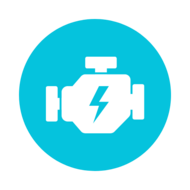
(View Complete Item Description)
Students are given an engineering challenge: A nearby hospital has just installed a new magnetic resonance imaging facility that has the capacity to make 3D images of the brain and other body parts by exposing patients to a strong magnetic field. The hospital wishes for its entire staff to have a clear understanding of the risks involved in working near a strong magnetic field and a basic understanding of why those risks occur. Your task is to develop a presentation or pamphlet explaining the risks, the physics behind those risks, and the safety precautions to be taken by all staff members. This 10-lesson/4-activity unit was designed to provide hands-on activities to teach end-of-year electricity and magnetism topics to a first-year accelerated or AP physics class. Students learn about and then apply the following science concepts to solve the challenge: magnetic force, magnetic moments and torque, the Biot-Savart law, Ampere's law and Faraday's law. This module is built around the Legacy Cycle, a format that incorporates findings from educational research on how people best learn.
Material Type:
Full Course,
Unit of Study
Author:
Eric Appelt













